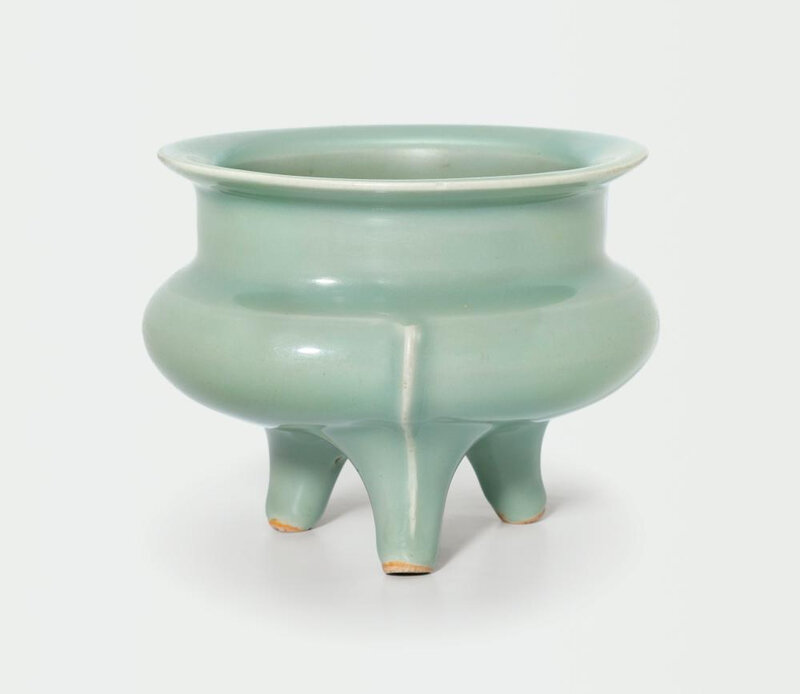A 'Longquan' celadon tripod censer and cover, Southern Song dynasty (1127-1279)
Lot 19. A 'Longquan' celadon tripod censer and cover, Southern Song dynasty (1127-1279); 14 cm, 5 1/2 in. Estimate £60,000 - £80,000. Lot Sold 106,250 GBP (137,286 USD). Courtesy Sotheby's.
of compressed globular form with a straight neck and a broad everted rim, supported on three splayed legs each moulded with a vertical flange, covered overall with a rich, lustrous sea-green glaze, the later Japanese silver domed cover pierced with a pair of phoenix amongst foliage.
Property from the Rui Xiu Lou Collection.
Sotheby's London, 7th November 2012, lot 220.
Censers of this form are held in important museums and private collections worldwide; two censers in the Palace Museum, Beijing, are illustrated in The Complete Collection of Treasures of the Palace Museum. Porcelain of the Song Dynasty (II),Hong Kong, 1996, pls 121 and 122; one in the National Palace Museum, Taipei, was included in the Museum's Special Exhibition of Incense Burners and Perfumers Throughout the Dynasties, Taipei, 1994, cat. no. 13; another in the Tokyo National Museum is published in Oriental Ceramics, The World's Great Collections, vol. 1, Tokyo, 1982, pl. 97; and a further censer from the Sir Percival David collection now in the British Museum, London, is published in Margaret Medley, Illustrated Catalogue of Celadon Wares in the Percival David Foundation of Chinese Art, London, 1997, col. pl. 34. An even larger Longquan censer of this shape is in the collection of the Harvard Art Museums (1997.122), and a related censer of similar size was sold in Christie's New York, 17th and 18th September 2015, lot 2344.

/https%3A%2F%2Fprofilepics.canalblog.com%2Fprofilepics%2F1%2F0%2F100183.jpg)
/https%3A%2F%2Fstorage.canalblog.com%2F03%2F02%2F119589%2F96711876_o.jpg)
/https%3A%2F%2Fstorage.canalblog.com%2F11%2F31%2F119589%2F94773502_o.jpg)
/https%3A%2F%2Fstorage.canalblog.com%2F20%2F83%2F119589%2F94772815_o.jpg)
/https%3A%2F%2Fstorage.canalblog.com%2F26%2F72%2F119589%2F75604929_o.jpg)
/https%3A%2F%2Fstorage.canalblog.com%2F59%2F60%2F119589%2F26458628_o.jpg)




/image%2F1371349%2F20240416%2Fob_3b1c51_telechargement.jpg)
/image%2F1371349%2F20240412%2Fob_e3109f_2024-nyr-22642-0929-000-a-carved-qingb.jpg)
/image%2F1371349%2F20240410%2Fob_77912a_2024-nyr-22642-0912-000-a-superb-and-v.jpg)
/image%2F1371349%2F20240410%2Fob_7020dd_2024-nyr-22642-0909-000-a-jian-hares-f.jpg)